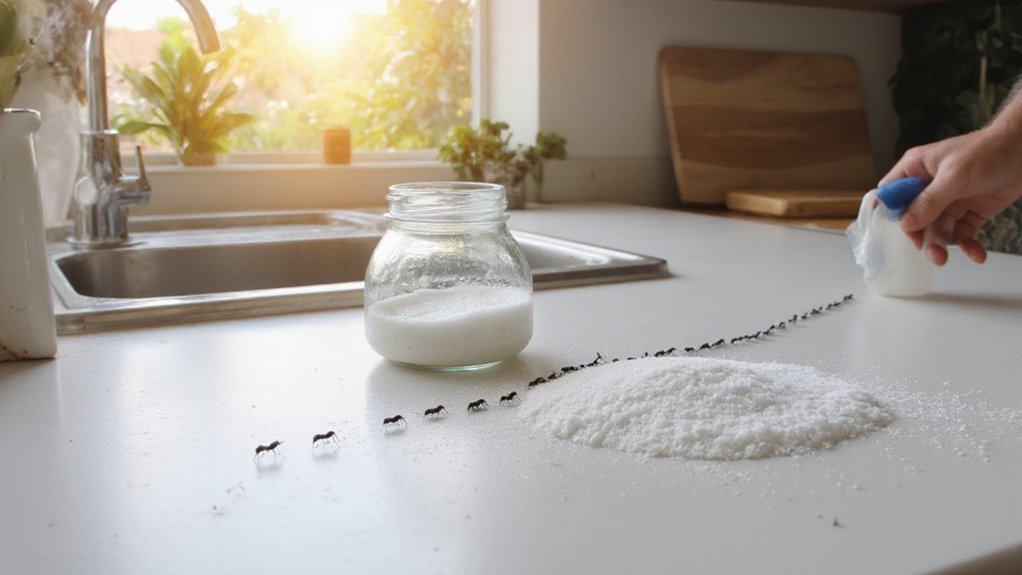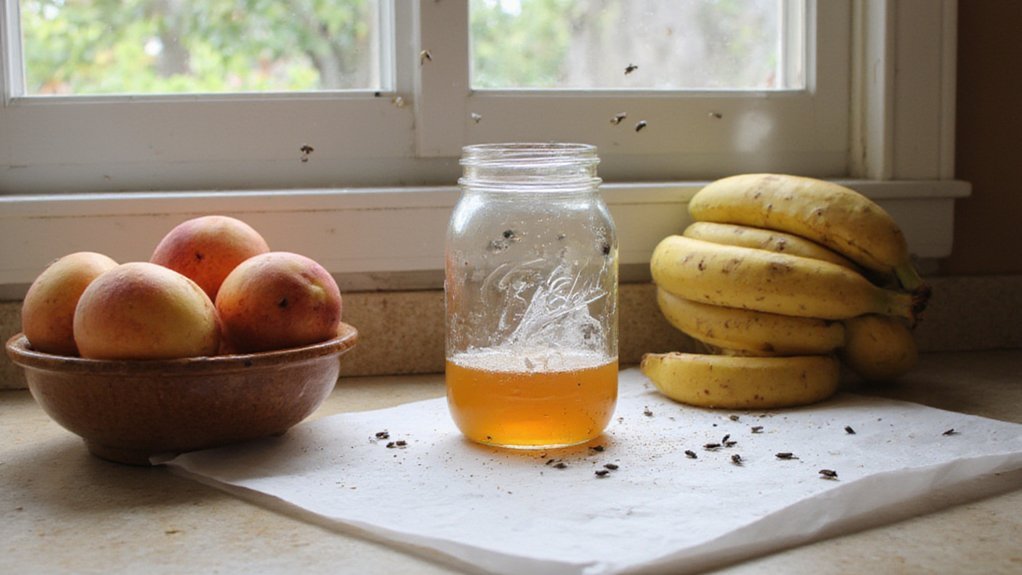You’ll stop ants before they settle by removing food, tracing trails, and targeting nests with the right bait. Start by identifying the species and cleaning food sources, then move to baiting and sealing entry points. Follow clear, proven steps that actually work—starting with identifying the ants.
Key Takeaways
- Identify the ant type by size, color, and trails to choose the most effective treatment and bait.
- Remove all accessible food: wipe counters, vacuum floors, seal food in airtight containers, and empty trash daily.
- Locate and follow ant trails back to entry points or nests, documenting entrances for targeted treatment.
- Place slow-acting, species-appropriate baits (sugar or protein-based) along trails so workers carry poison to the nest.
- Seal gaps, fix screens and plumbing penetrations, and maintain cleanliness to prevent re-infestation.
Identifying the Ant Species in Your Kitchen
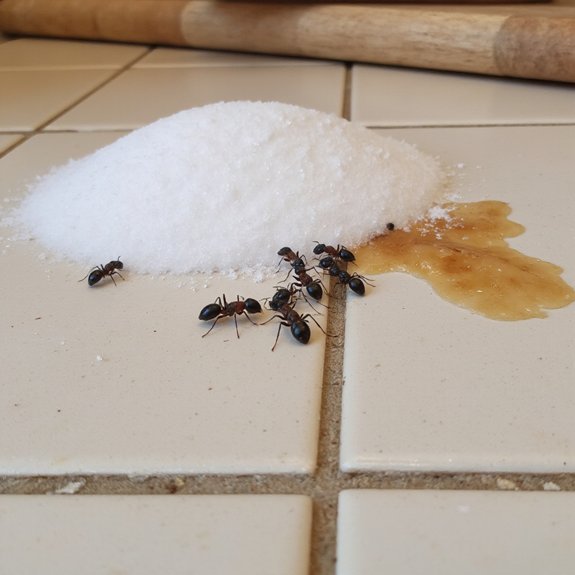
How can you tell which ant is invading your kitchen? You’ll assess size, color, and procession patterns to narrow types of ants quickly. Look for single-file trails, aggressive biting, or sap-sucking tendencies—ant behavior gives diagnostic clues. Tap into simple tools: magnifier, ruler, smartphone photo, and a field guide or app to compare images. Note nesting signs—small soil piles, grease trails, or wood damage—and record time of day when activity peaks. Don’t guess from one sighting; follow the trail to the nest entrance to confirm identity. Once you identify pavement ants, odorous house ants, carpenter ants, or pharaoh ants, you’ll choose targeted controls that save time and reduce chemicals. You’ll also document observations to iterate your strategy—measure outcomes, refine traps, and scale effective tactics. Stay precise, avoid assumptions, and use evidence-driven steps to turn identification into predictable, innovative results. Prioritize rapid learning cycles and integrate tech for smarter control.
Cleaning and Removing Food Sources
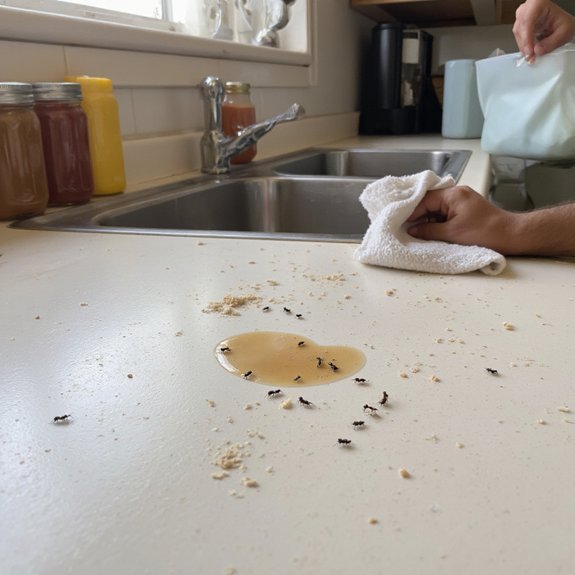
Because ants follow food, you need to eliminate every accessible food source and make your kitchen inhospitable: wipe counters and stovetops after each use, sweep and vacuum floors (including under appliances), and mop sticky residues that attract scouts. You’ll seal packaging, store goods in sealed containers, and empty trash daily. Consistent kitchen hygiene interrupts ant behavior patterns and reduces signals, so treat cleaning as a tactical routine.
Eliminate accessible food: wipe, sweep, seal, and inspect nightly to disrupt ant trails and discourage foragers
- Store cereals, pet food, and baking items in sealed glass or heavy plastic.
- Clean spills immediately and use enzyme cleaners for sticky sugary residues.
- Schedule quick nightly inspections to remove crumbs and overripe produce.
Adopt minimalist countertop practices and rethink storage to remove scent cues that guide foragers. Use smart timers or reminders to sustain habits; automation and disciplined routines amplify results. These measures cut food availability, disrupt pheromone trails, and make your kitchen unattractive to ants without relying on chemicals.
Finding Trails and Nesting Sites
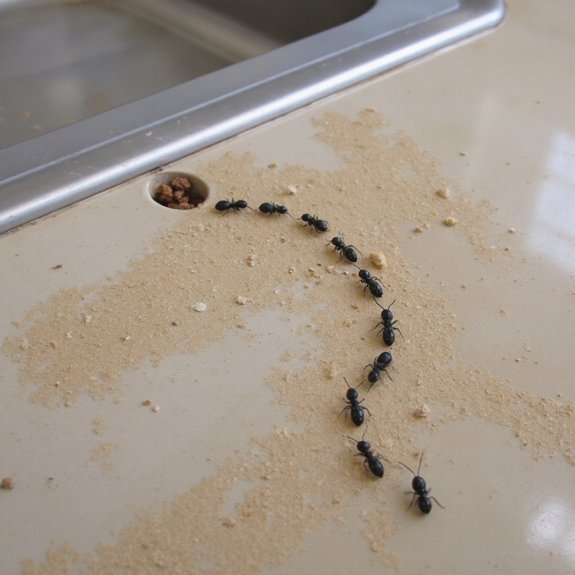
With food removed, you’ll now locate where ants are coming from and where they’re nesting. Watch ant behavior during morning and evening peaks; trails become visible as workers follow scent pheromones to resources. Track a single line to its origin: follow the trail backward from crumbs to crevice, baseboard, or wall void. Inspect doorframes, window sills, plumbing penetrations, and appliance gaps; ants exploit tiny openings. Use a flashlight and magnifier to confirm nest location without disturbing it. Mark entry and exit points so you can monitor activity over hours and days. Photograph trails for pattern analysis and to share with pest professionals or smart-control tools. Note environmental factors—moisture, warmth, sweet residues—that correlate with nest location choices. Recording these observations reduces guesswork and guides targeted, minimally invasive interventions. You’ll gain control fastest by mapping behavior and entry points before choosing a treatment. Stay systematic, patient, and evidence-driven throughout always.
Effective Baits and Safe Treatment Options
While you’ve mapped entry points, you’ll now choose baits and treatments that eliminate the colony rather than just kill foragers. Start with targeted bait types: sugar-based for sweet-loving ants, protein/fat-based where adults prefer protein, and slow-acting toxicants that workers carry to the nest. Place baits along trails and near nests you found. Combine baits with non-repellent liquid options if infestation persists, but prioritize treatment safety—keep baits out of reach of pets and kids, follow label directions, and wear gloves.
Think like an innovator: monitor bait uptake daily, rotate bait types if uptake drops, and use minimal effective product. If you opt for professional-grade treatments, confirm integrated pest management practices and ask about low-toxicity alternatives. Maintain records of dates and locations to accelerate data-driven adjustments and validate treatment outcomes regularly implemented.
- Use observation-driven bait selection.
- Prioritize containment and precise placement.
- Document results and adjust strategy quickly.
Long-Term Prevention and Home Sealing Strategies
If you want to keep ants out for good, seal their entry points and remove the conditions that attract them. You’ll inspect perimeter gaps, screens, and utility penetrations, then apply silicone or foam. Prioritize food storage, quick cleanups, and humidity control as continuous preventive measures. Use smart sensors or DIY traps to monitor activity; innovation helps you detect breaches early.
| Area | Action | Frequency |
|---|---|---|
| Doors/Windows | Caulk/seal gaps | Inspect monthly |
| Pipes/Cables | Foam/escutcheon plates | Check quarterly |
| Pantry/Floors | Airtight containers/clean | Daily |
Focus upgrades on durability: metal thresholds, weatherstripping, and permanent mesh. Combine home sealing with behavioral shifts—no exposed crumbs, routine waste removal—to create a resilient barrier. These steps make your kitchen ant-resistant long-term. Maintain records of repairs and sensor alerts, iterate your sealing solutions, and invest in modular, sustainable materials where possible. Over time you’ll reduce interventions, lower pesticide reliance, and achieve a future-proof kitchen against ants with measurable performance metrics now.
